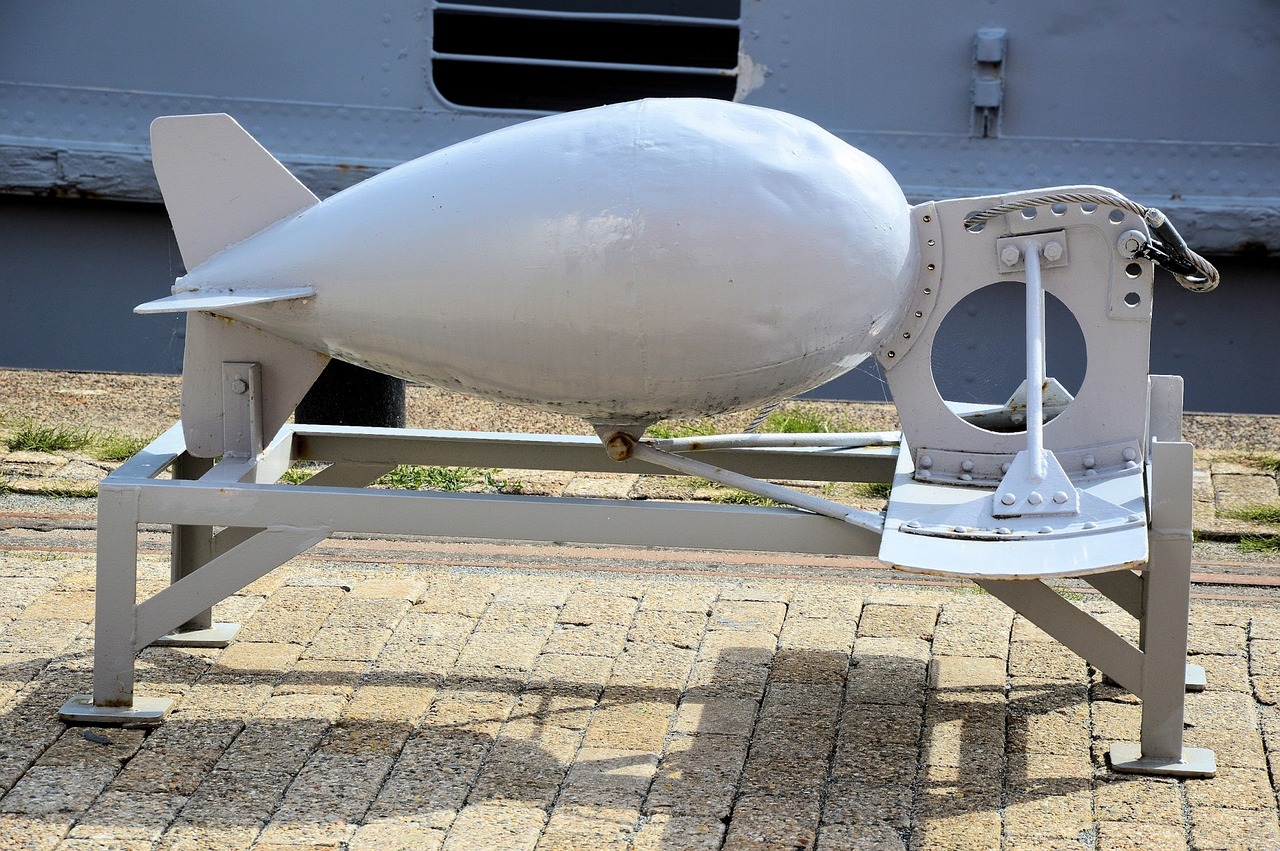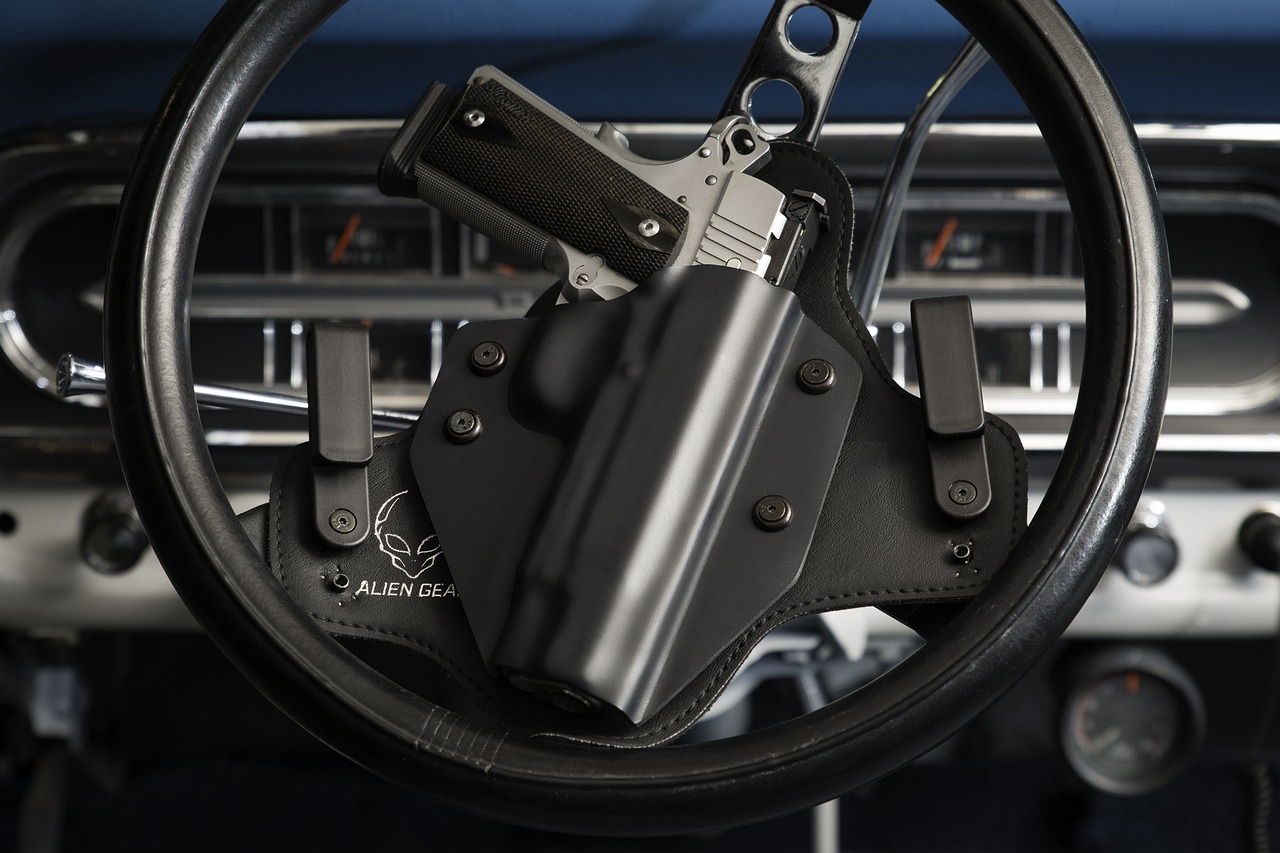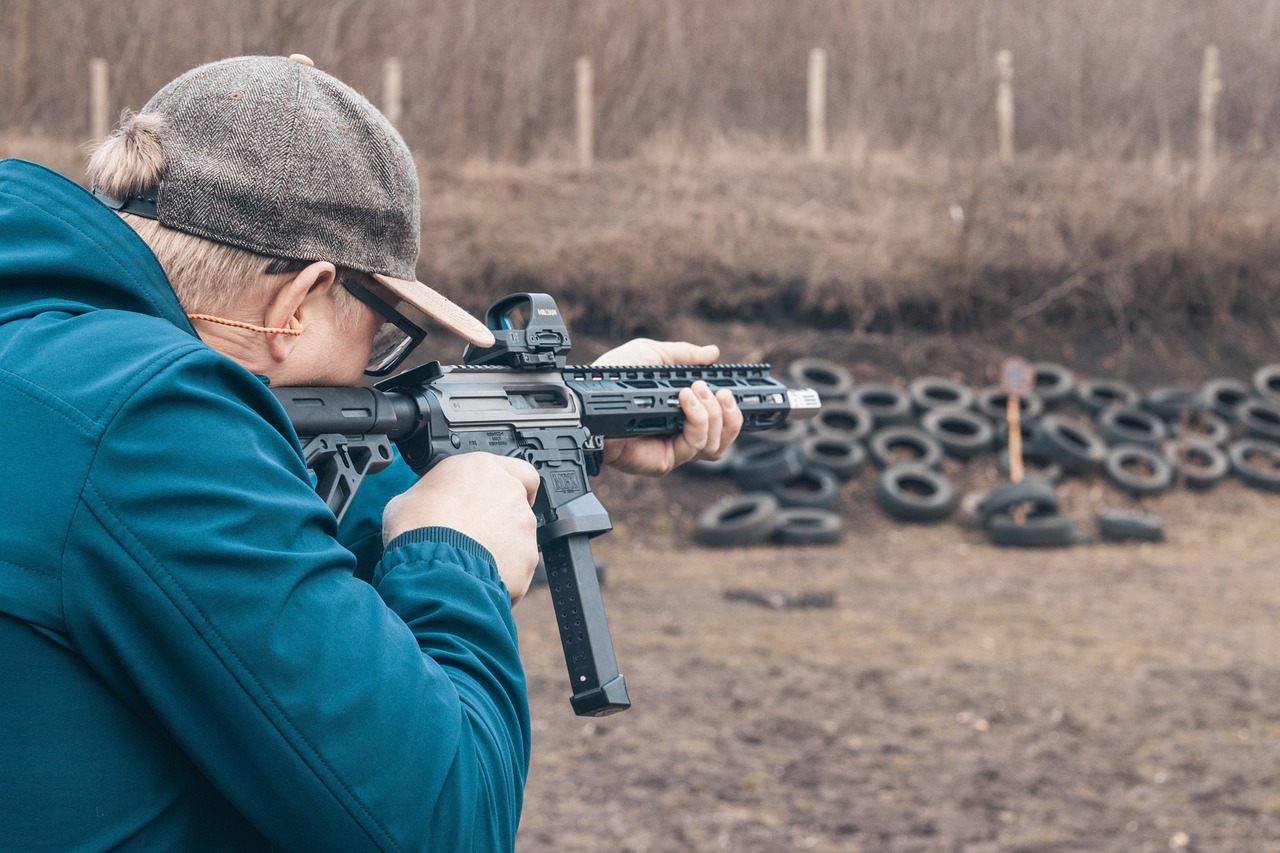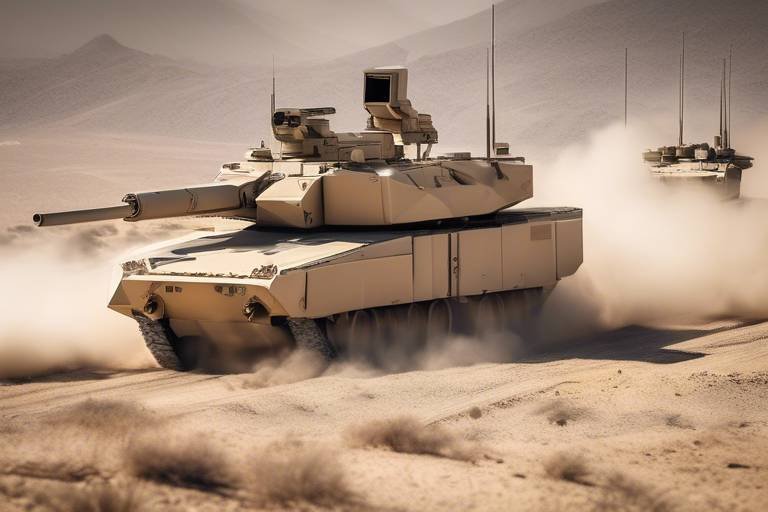Exploring the Development of Advanced Weaponry
The evolution of advanced weaponry is a fascinating journey through time, marked by human ingenuity and the relentless pursuit of power and security. From the rudimentary spears and bows of ancient civilizations to the sophisticated drones and cyber weapons of today, the development of weaponry reflects not just technological advancements but also the shifting dynamics of society, politics, and warfare. This article delves into the multifaceted nature of weaponry evolution, examining its historical context, the groundbreaking technologies that have emerged, and the profound implications these advancements have on modern warfare and international relations.
Throughout history, weaponry has played a critical role in shaping human conflict and cooperation. The very act of creating tools for combat has driven innovation, leading to the development of strategies that have defined civilizations. For instance, the invention of gunpowder revolutionized warfare in the 14th century, paving the way for firearms and artillery that changed the battlefield landscape forever. Similarly, World War II catalyzed a technological arms race that birthed nuclear weapons, forever altering global politics and military strategy.
As we explore the development of advanced weaponry, it becomes essential to understand the intricate interplay between technological innovation and historical context. Each leap in weaponry has often been a response to the challenges posed by previous conflicts, illustrating a continuous cycle of adaptation and evolution. For instance, the Cold War era saw an unprecedented focus on developing intercontinental ballistic missiles (ICBMs) and nuclear arsenals, fundamentally altering international relations and creating a delicate balance of power known as mutually assured destruction (MAD).
In the current era, we are witnessing another transformation in weaponry, driven by rapid advancements in technology. The integration of artificial intelligence, robotics, and precision-guided munitions has redefined the rules of engagement, making warfare more efficient yet raising ethical questions about the future of combat. As we delve deeper into these technological innovations, we will uncover how they are reshaping military capabilities and influencing global power dynamics.
The implications of these advancements are profound, not only for military strategy but also for international relations. The race for superior weaponry has led to renewed arms races and complex geopolitical tensions, with nations vying for dominance on the global stage. Understanding these dynamics is crucial as we navigate the challenges posed by advanced weaponry in the 21st century.
- What are advanced weaponry systems? Advanced weaponry systems refer to modern military technologies that include precision-guided munitions, drones, and autonomous weapons, often enhanced by artificial intelligence.
- How has technology changed warfare? Technology has transformed warfare by increasing the accuracy, efficiency, and lethality of weapons, enabling new forms of combat and strategic planning.
- What are the ethical concerns surrounding advanced weaponry? Ethical concerns include the potential for autonomous weapons to make life-and-death decisions without human intervention and the implications of cyber warfare on civilian infrastructure.
- How do arms control agreements work? Arms control agreements are treaties between nations aimed at regulating the development, production, and deployment of specific types of weapons to promote stability and reduce the risk of conflict.

The Historical Context of Weaponry Development
Understanding the historical milestones in weaponry is like peering through a time machine that reveals the intricate tapestry of human conflict and innovation. From the rudimentary stone tools of our ancestors to the sophisticated drones and missiles of today, the evolution of weaponry has been profoundly influenced by the socio-political landscape of each era. In ancient times, the development of weapons was often a response to immediate threats; for instance, the invention of the bow and arrow allowed early humans to hunt more effectively and defend against predators. Fast forward to the age of empires, where the introduction of gunpowder revolutionized warfare, changing the dynamics of power and military strategy.
Throughout history, each major conflict has acted as a catalyst for technological innovation. The World Wars, for example, saw unprecedented advancements in weaponry, including tanks, aircraft, and eventually, nuclear weapons. These innovations were not just about brute force; they also reflected a shift in military strategy, emphasizing speed, precision, and the ability to strike at great distances. The arms race during the Cold War further illustrates this point, as nations scrambled to outdo one another, leading to the creation of increasingly sophisticated systems designed for both deterrence and domination.
It's essential to recognize that the evolution of weaponry is not just a linear progression but a complex interplay of technology, politics, and ethics. For instance, the development of chemical and biological weapons during the 20th century raised significant ethical questions about the morality of using such devastating tools. These discussions continue today, as nations grapple with the implications of emerging technologies like autonomous weapons and artificial intelligence in warfare.
In summary, the historical context of weaponry development provides a crucial lens through which we can understand the present landscape of military technology. By examining past conflicts and innovations, we can gain insights into how today's advanced systems have been shaped by the lessons—and mistakes—of history. This understanding is vital as we navigate the complexities of modern warfare and international relations.

Technological Innovations in Weaponry
The landscape of warfare has dramatically shifted over the past few decades, thanks to technological innovations that have redefined what it means to engage in combat. From the invention of gunpowder to the development of nuclear arms, history has shown us that each leap in technology brings with it new strategies and challenges. Today, we stand on the precipice of a new era, characterized by the integration of artificial intelligence, robotics, and precision-guided munitions. These advancements are not just enhancements; they are game-changers that reshape military operations and strategies across the globe.
One of the most significant innovations is the rise of artificial intelligence (AI). Imagine a weapon system that can analyze vast amounts of data in real time, identify targets with pinpoint accuracy, and make decisions faster than any human could. AI is revolutionizing the battlefield by enhancing decision-making processes, improving targeting precision, and increasing operational efficiency. This leap in capability means that military forces can respond to threats with unprecedented speed and accuracy. Think of it as having a super-intelligent assistant that not only helps you make decisions but can also execute them autonomously.
Artificial intelligence doesn't just stop at decision-making; it extends into various facets of military operations. For instance, AI-driven systems can process intelligence data from multiple sources, including satellite imagery, drone surveillance, and ground reports, to create a comprehensive picture of the battlefield. This capability allows commanders to make informed decisions based on real-time information, significantly increasing the chances of mission success. However, this advancement comes with a set of challenges. The reliance on AI in critical military operations raises ethical questions about accountability and the potential for unintended consequences. What happens when a machine makes a life-and-death decision?
One of the most controversial aspects of AI in weaponry is the development of autonomous weapons systems. These systems can operate with minimal human intervention, making them capable of executing strikes without direct oversight. While this technology can improve efficiency and reduce risks to human soldiers, it also raises serious ethical and strategic concerns. Are we ready to relinquish control over life-and-death decisions to machines? The debate is ongoing, and as nations invest heavily in these technologies, the implications for future conflicts are profound.
Moreover, AI's integration into cyber warfare strategies is transforming how nations defend against and conduct cyber attacks. With the ability to analyze patterns and detect anomalies at lightning speed, AI is becoming an indispensable tool in the cyber domain. It can identify vulnerabilities in systems before they are exploited and respond to threats in real time. As cyber warfare becomes an increasingly critical component of national security, the role of AI in this arena cannot be overstated. The stakes are high, and the potential for disruption is vast.
While AI and robotics dominate the conversation, we must not overlook the evolution of traditional weaponry. Conventional arms have also seen significant advancements, particularly in terms of firepower, range, and accuracy. Modern artillery systems can now strike targets with remarkable precision from great distances, minimizing collateral damage and maximizing effectiveness. The introduction of smart munitions—bombs and missiles equipped with guidance systems—has dramatically changed how military forces engage in combat. It's like upgrading from a shotgun to a sniper rifle; the difference in effectiveness is staggering.
In conclusion, the technological innovations in weaponry are reshaping the future of warfare. As we embrace these advancements, it’s crucial to consider the ethical implications and potential consequences of such power. The battlefield of tomorrow will not only be defined by the weapons we wield but also by the decisions we make regarding their use. Are we prepared for the challenges that lie ahead?
- What are autonomous weapons systems? Autonomous weapons systems are military technologies that can operate without human intervention, making decisions and executing actions based on pre-programmed criteria.
- How does AI improve military operations? AI enhances military operations by processing vast amounts of data quickly, improving targeting accuracy, and enabling real-time decision-making.
- What are the ethical concerns related to AI in warfare? Ethical concerns include accountability for decisions made by machines, the potential for unintended consequences, and the moral implications of using autonomous systems in combat.
- How have conventional weapons evolved? Conventional weapons have evolved to include advanced targeting systems, increased firepower, and improved accuracy, allowing for more effective and precise military engagements.

The Role of Artificial Intelligence
Artificial Intelligence (AI) has become a game changer in the realm of modern weaponry, fundamentally altering how military operations are conducted. Imagine a battlefield where machines can analyze data faster than any human could, making split-second decisions that could mean the difference between victory and defeat. This is not science fiction; it’s the reality we are stepping into. AI enhances decision-making processes by sifting through vast amounts of information, identifying patterns, and predicting outcomes with remarkable accuracy. For instance, AI algorithms can analyze enemy movements in real-time, allowing for more precise targeting and resource allocation.
Moreover, AI’s ability to learn and adapt means that military systems can continually improve their performance. Think of it as a student who learns from every test taken, becoming better with each attempt. This capability is especially critical in high-stakes environments where the margin for error is razor-thin. By utilizing AI, military forces can enhance their operational efficiency, ensuring that they are always one step ahead of their adversaries.
One of the most striking applications of AI in weapon systems is in the realm of autonomous weapons. These systems can operate with minimal human intervention, navigating complex environments and making decisions based on real-time data. While this can lead to increased efficiency, it also raises significant ethical and strategic concerns. For example, if an autonomous drone misidentifies a target, the consequences could be catastrophic. This brings us to a crucial question: how do we ensure that these systems operate within ethical boundaries? The debate is ongoing, and it’s clear that as we advance, we must tread carefully.
Additionally, AI plays a pivotal role in cyber warfare. In a world where information is power, the ability to detect threats and respond to cyber attacks swiftly is invaluable. AI systems can analyze network traffic, identify anomalies, and respond to potential breaches in a fraction of the time it would take a human operator. This capability not only fortifies a nation's defenses but also transforms the landscape of warfare itself. The integration of AI into military strategies is not just about keeping up with technological advancements; it’s about redefining what it means to be secure in an increasingly digital world.
In summary, the role of artificial intelligence in weapon systems is multifaceted and profound. As we continue to explore this frontier, it’s essential to balance innovation with ethical considerations, ensuring that the technologies we develop serve to protect rather than endanger. The future of warfare may very well hinge on how we navigate these complex challenges, making it imperative for policymakers, military leaders, and technologists to collaborate closely.
- What is the impact of AI on military decision-making? AI enhances military decision-making by providing rapid analysis of data, allowing for quicker and more accurate responses in combat situations.
- Are autonomous weapons systems safe? While they can increase efficiency, there are significant ethical concerns regarding their use, especially if they misidentify targets.
- How does AI influence cyber warfare? AI improves threat detection and response times in cyber warfare, making military networks more resilient against attacks.

Autonomous Weapons Systems
Autonomous weapons systems (AWS) represent a significant leap in military technology, fundamentally altering the landscape of warfare. Imagine a battlefield where machines make life-and-death decisions without human intervention. It sounds like something out of a science fiction novel, but the reality is that we are inching closer to this scenario every day. These systems, often equipped with advanced sensors and artificial intelligence, can identify and engage targets with minimal human oversight. This capability raises profound ethical and strategic questions that societies must grapple with as these technologies become more prevalent.
At the core of the debate surrounding AWS is the issue of accountability. If an autonomous drone decides to strike a target that results in civilian casualties, who is responsible? The manufacturer, the military operator, or the algorithm itself? This dilemma highlights the need for robust frameworks that govern the use of such technology. As we delve deeper into the implications of AWS, it becomes clear that we must establish clear guidelines and ethical standards to ensure that these systems are used responsibly.
Moreover, the integration of AWS into military operations could shift the nature of combat. Traditional warfare often relies on human intuition and experience, but with AWS, decisions can be made in microseconds based on data analysis and predictive algorithms. This speed can provide a tactical advantage, but it also risks escalating conflicts. For instance, if one nation deploys AWS, others may feel compelled to follow suit, leading to an arms race in autonomous technologies. This could destabilize global security as nations rush to develop and deploy their own systems.
To illustrate the potential capabilities and concerns surrounding AWS, consider the following table:
| Capability | Potential Benefits | Concerns |
|---|---|---|
| Target Identification | Enhanced accuracy and reduced collateral damage | Risk of misidentification and civilian harm |
| Operational Speed | Faster decision-making in combat scenarios | Escalation of conflicts due to rapid engagements |
| Reduced Human Risk | Minimizes the exposure of soldiers to danger | Dehumanization of warfare; moral implications |
The rapid development of AWS also raises questions about the future of military strategy. As these systems become more integrated into armed forces, traditional military doctrines may need to be re-evaluated. The reliance on human soldiers could diminish, leading to a new era of warfare where machines are at the forefront. This transition may not only change how wars are fought but also how they are perceived by the public. The increasing presence of machines in combat could desensitize societies to the realities of war, as the human element is removed from the equation.
In conclusion, while autonomous weapons systems offer promising advancements in military technology, they come with significant challenges that must be addressed. The ethical implications, potential for escalation, and changes to military strategy necessitate a thorough examination of how these systems will be integrated into modern warfare. As we stand on the brink of this new era, it is critical for policymakers, military leaders, and society as a whole to engage in an open dialogue about the responsible use of AWS and the safeguards needed to mitigate their risks.
- What are autonomous weapons systems?
Autonomous weapons systems are military technologies that can operate independently, making decisions without human input, often using artificial intelligence. - What are the ethical concerns surrounding AWS?
The primary ethical concerns include accountability for actions taken by these systems, the potential for civilian casualties, and the moral implications of removing humans from combat decisions. - How might AWS change the nature of warfare?
AWS could lead to faster decision-making, reduced human risk, and potentially escalate conflicts due to the rapid engagement capabilities of these systems. - What steps can be taken to regulate AWS?
Establishing international guidelines, ethical standards, and accountability measures are crucial to ensure responsible use of autonomous weapons systems.

AI in Cyber Warfare
In the rapidly evolving landscape of modern warfare, artificial intelligence (AI) has emerged as a game-changer, particularly in the realm of cyber warfare. Imagine a world where military operations can anticipate and counter threats in real-time, where systems learn and adapt faster than human operators ever could. This is not just a futuristic fantasy; it is becoming a reality. AI's ability to process vast amounts of data at lightning speed allows military strategists to identify vulnerabilities, predict enemy movements, and deploy countermeasures with unprecedented precision.
One of the most significant advantages of integrating AI into cyber warfare is its ability to enhance threat detection. Traditional cybersecurity measures often struggle to keep up with the sophisticated tactics employed by cyber adversaries. However, AI systems can analyze patterns and anomalies in network traffic, identifying potential breaches before they escalate into full-blown attacks. This proactive approach not only saves valuable time but also mitigates the risks associated with cyber threats.
Moreover, AI can automate responses to cyber incidents, drastically reducing the reaction time when an attack occurs. For instance, when a cyber intrusion is detected, AI systems can immediately initiate defensive protocols, isolate affected systems, and even launch counter-offensive measures—all without human intervention. This automation is akin to having a highly trained soldier who never tires and can operate around the clock, ensuring that defenses are always on high alert.
However, the integration of AI in cyber warfare is not without its challenges. There are ethical considerations that must be taken into account, particularly regarding the potential for unintended consequences. For example, if AI systems make decisions based on flawed data or algorithms, they could inadvertently escalate conflicts or target the wrong entities. This raises questions about accountability and the need for robust oversight mechanisms to govern AI's role in military operations.
In summary, AI in cyber warfare represents a double-edged sword. While it offers significant advantages in terms of speed, efficiency, and threat detection, it also poses serious ethical and strategic dilemmas that must be carefully navigated. As nations continue to invest in these technologies, the need for international dialogue and regulations becomes increasingly crucial to ensure that AI enhances security rather than undermines it.
- What is AI's role in cyber warfare? AI enhances threat detection, automates responses, and improves decision-making in military operations.
- Are there ethical concerns with AI in military applications? Yes, ethical concerns include accountability, potential for unintended consequences, and the need for oversight.
- How does AI improve threat detection? AI analyzes vast amounts of data to identify patterns and anomalies, allowing for quicker identification of potential breaches.
- Can AI make decisions without human intervention? Yes, AI can automate responses to cyber incidents, but this raises concerns about the accuracy and reliability of those decisions.

Advancements in Conventional Weapons
When we think about the evolution of warfare, it's easy to get caught up in the glitzy allure of high-tech gadgets and futuristic drones. However, conventional weapons still play a pivotal role in military strategy and battlefield effectiveness. Over the years, advancements in these traditional weapons have significantly altered the dynamics of combat. From enhanced firepower to improved accuracy and range, these developments have made conventional weaponry more lethal and effective than ever before.
One of the most notable advancements in conventional weapons is the integration of smart technology. Modern artillery systems, for instance, now utilize precision-guided munitions (PGMs) that can hit targets with astonishing accuracy. This shift from unguided bombs to precision-guided systems means that militaries can achieve their objectives with fewer resources and less collateral damage. Imagine a sniper with a laser-guided rifle; it's not just about hitting the target anymore, but hitting it with pinpoint accuracy that minimizes the risk to civilians and infrastructure.
Moreover, advancements in materials science have led to the development of lighter and stronger materials, allowing for the creation of weapons that are both durable and mobile. For example, the use of composite materials in tanks and armored vehicles has enhanced their survivability while reducing weight, enabling faster maneuverability on the battlefield. This is akin to upgrading from a bulky, old-school flip phone to a sleek smartphone—it's all about efficiency and effectiveness.
In addition to these technological innovations, the automation of conventional weapons has made a significant impact. Systems like the Phalanx CIWS (Close-In Weapon System) are designed to automatically detect and destroy incoming threats, such as missiles or enemy aircraft. This level of automation allows for quicker responses in high-pressure situations, effectively changing the tempo of battle. Imagine a chess game where one player can make moves without having to think about each piece individually; that’s how automation can shift the balance of power on the battlefield.
Furthermore, the evolution of conventional weapons is not just limited to land-based systems. Naval warfare has also seen substantial advancements, particularly with the introduction of guided missiles and advanced naval vessels. Modern warships are equipped with sophisticated radar and targeting systems, which enable them to engage multiple threats simultaneously while remaining agile in combat. This capability can be compared to a conductor leading an orchestra, ensuring that every instrument plays in harmony while maintaining the overall tempo of the performance.
As we look to the future, it's clear that conventional weapons will continue to evolve. The integration of artificial intelligence and machine learning into these systems is on the horizon, promising even greater advancements in targeting, logistics, and operational planning. As militaries around the world invest in these technologies, the nature of conventional warfare will undoubtedly shift, challenging traditional notions of combat and strategy.
In conclusion, while the spotlight often shines on advanced technologies, the advancements in conventional weapons remain crucial to modern military operations. As we navigate this complex landscape, understanding these developments helps us appreciate the intricate balance between technology and traditional military strategies.
- What are precision-guided munitions?
Precision-guided munitions (PGMs) are weapons that use guidance systems to hit targets with high accuracy, reducing collateral damage.
- How have materials science advancements affected weaponry?
Advancements in materials science have led to the creation of lighter, stronger weapons that enhance mobility and durability on the battlefield.
- What role does automation play in modern weaponry?
Automation in weaponry allows for quicker responses to threats, enhancing the effectiveness of military operations.
- Will conventional weapons continue to evolve?
Yes, as technology advances, conventional weapons are expected to integrate more sophisticated systems, including AI and machine learning.

The Impact of Weaponry on Global Politics
The evolution of advanced weaponry has not only transformed the battlefield but has also significantly influenced global politics. As nations invest heavily in new technologies, the balance of power shifts, leading to complex geopolitical dynamics. The mere presence of advanced weaponry can deter potential aggressors, but it can also incite fears and provoke arms races. This duality creates a paradox where nations must navigate the fine line between securing their sovereignty and escalating tensions with others.
In today's world, the stakes are higher than ever. The advancement of weaponry often leads to increased military spending as countries strive to maintain or enhance their military capabilities. This arms race can lead to a cycle of distrust, where nations feel compelled to develop more sophisticated systems to keep pace with their adversaries. For example, the development of hypersonic missiles has prompted several countries to accelerate their own missile programs, fearing that falling behind could leave them vulnerable.
Moreover, the implications of advanced weaponry extend to international treaties and agreements aimed at arms control. These agreements are crucial for maintaining stability and preventing conflict. They foster international cooperation and create frameworks for dialogue among nations. However, the challenge lies in ensuring compliance and trust among countries that may be skeptical of each other's intentions. The ongoing negotiations surrounding nuclear disarmament and the regulation of autonomous weapons highlight the delicate balance required to manage these advanced technologies.
One cannot ignore the role of non-state actors in this equation. The proliferation of advanced weaponry has empowered various groups that operate outside traditional state structures. These actors can destabilize regions and challenge established powers, further complicating the political landscape. For instance, the rise of drone warfare has enabled terrorist organizations to conduct operations that were once the domain of nation-states, blurring the lines of warfare and complicating international responses.
Furthermore, the global implications of weaponry development are evident in the shifting alliances and partnerships among nations. Countries with advanced military technologies often form coalitions to enhance their strategic advantages. For example, the collaboration between the United States and its allies in developing missile defense systems illustrates how weaponry can shape diplomatic relations. Such partnerships can lead to increased tensions with nations outside these alliances, creating a complex web of political interactions.
In summary, the impact of weaponry on global politics is profound and multifaceted. From arms races to international treaties and shifting alliances, the development of advanced weaponry shapes the very fabric of international relations. As technology continues to evolve, so too will the strategies and policies that govern how nations interact on the global stage.
- How does advanced weaponry influence international relations?
Advanced weaponry can shift power dynamics, incite arms races, and necessitate international treaties aimed at arms control. - What role do non-state actors play in the context of weaponry?
Non-state actors can destabilize regions and challenge nation-states by utilizing advanced weaponry, complicating traditional warfare paradigms. - Why are arms control agreements important?
They help mitigate risks associated with advanced weaponry, fostering cooperation and promoting stability among nations. - What are the geopolitical implications of weaponry development?
Advancements in weaponry can lead to shifting alliances, increased military spending, and changes in diplomatic relations.

Arms Control Agreements
Arms control agreements have been a cornerstone in the effort to manage the proliferation of advanced weaponry. These treaties serve as frameworks for nations to negotiate the limitations and reductions of their military capabilities, aiming to foster a sense of stability and trust among countries. The significance of these agreements cannot be overstated; they play a crucial role in preventing arms races and ensuring that nations are held accountable for their military actions. Think of them as the rules of a game where all players agree to play fairly, which ultimately leads to a more peaceful coexistence.
Historically, arms control agreements have evolved alongside technological advancements in weaponry. For instance, the Nuclear Non-Proliferation Treaty (NPT), established in 1968, aimed to prevent the spread of nuclear weapons and promote peaceful uses of nuclear energy. This treaty highlights a collective acknowledgment of the dangers posed by nuclear arms, illustrating how nations can come together to mitigate risks. Similarly, the Intermediate-Range Nuclear Forces Treaty (INF), signed in 1987, eliminated an entire class of nuclear weapons, showcasing the potential for diplomatic negotiations to lead to significant disarmament.
However, the landscape of arms control is not without its challenges. The emergence of new technologies, such as hypersonic weapons and cyber warfare capabilities, complicates traditional arms control frameworks. As nations develop these advanced systems, they often feel compelled to enhance their own arsenals, leading to a cycle of mistrust and competition. This necessitates the creation of new agreements that address these modern threats. For instance, as we move further into the 21st century, discussions surrounding the regulation of autonomous weapons systems are becoming increasingly urgent. How do we ensure that these technologies are used responsibly, without compromising global security?
Moreover, the effectiveness of arms control agreements often hinges on the political will of the nations involved. When countries prioritize their national interests over collective security, the integrity of these treaties can be jeopardized. This has been evident in recent years, where some nations have withdrawn from pivotal agreements, citing security concerns or perceived inequities. The New START treaty, which limits the number of strategic nuclear warheads, is an example of an agreement that has faced scrutiny and challenges in its implementation. The question remains: can nations find a balance between their security needs and the global imperative for arms control?
In conclusion, arms control agreements are essential in managing the complexities of modern warfare and the proliferation of advanced weaponry. They represent a commitment to dialogue and cooperation, acknowledging that the stakes are too high for any single nation to navigate alone. As the global landscape continues to evolve, the challenge will be to adapt these agreements to address emerging threats while maintaining the core principles of trust and accountability. Will nations rise to the occasion, or will the allure of advanced weaponry overshadow the pursuit of peace?
- What are arms control agreements? Arms control agreements are treaties between countries that aim to regulate and limit the development, stockpiling, and proliferation of weapons, particularly advanced and nuclear weapons.
- Why are arms control agreements important? They are crucial for maintaining international peace and security, preventing arms races, and promoting trust and cooperation among nations.
- What challenges do arms control agreements face today? The emergence of new technologies, geopolitical tensions, and the willingness of nations to comply with existing treaties pose significant challenges.
- Can new technologies be regulated by existing arms control agreements? Existing agreements may need to be updated or new treaties established to effectively address modern advancements in weaponry, such as autonomous systems and cyber warfare.

Geopolitical Implications
The advancement of weaponry has become a pivotal factor in shaping the geopolitical landscape of our time. As nations invest heavily in cutting-edge military technologies, the balance of power is constantly in flux. This shift can lead to significant changes in international relations and alliances. For instance, countries that lag in military capabilities may find themselves at a disadvantage, prompting them to either enhance their own arsenals or form strategic partnerships with more advanced nations. This phenomenon often results in an arms race, where nations continuously strive to outdo each other in terms of military prowess.
Moreover, the introduction of advanced weaponry can exacerbate existing tensions between nations. Take, for example, the ongoing rivalry between major powers like the United States and China. The development of sophisticated missile systems, stealth technology, and cyber warfare capabilities can lead to a heightened sense of insecurity, prompting countries to adopt more aggressive postures. This can create a precarious situation where misunderstandings or miscalculations could lead to conflict. The stakes are incredibly high, as the potential for devastating consequences looms over any military engagement.
In addition, the proliferation of advanced weaponry can destabilize regions that are already fraught with conflict. Countries in volatile areas may acquire new technologies, which can embolden them to pursue more aggressive policies. This situation can lead to a vicious cycle of violence, where the introduction of advanced weaponry fuels further conflict. For instance, in the Middle East, the availability of precision-guided munitions has transformed how wars are fought, often resulting in higher civilian casualties and more significant humanitarian crises.
To illustrate the impact of weaponry on global politics, consider the following table, which outlines key developments in military technology and their geopolitical consequences:
| Technology | Geopolitical Consequence |
|---|---|
| Stealth Aircraft | Increased military capabilities for surprise attacks, leading to heightened tensions. |
| Cyber Warfare Tools | New forms of warfare that can destabilize governments without traditional military engagement. |
| Autonomous Weapons | Potential for reduced human oversight in warfare, raising ethical concerns and strategic unpredictability. |
| Missile Defense Systems | Shift in power dynamics as nations seek to counter perceived threats, often leading to arms races. |
As we navigate this complex landscape, it becomes increasingly clear that the implications of advanced weaponry extend far beyond the battlefield. They influence diplomatic relations, economic partnerships, and even cultural exchanges. Nations must tread carefully, balancing their desire for security with the need for cooperation. The challenge lies in fostering a global environment where advanced weaponry is seen not as a means to dominate but as a tool for maintaining peace and stability.
- What are the primary drivers behind the advancement of weaponry? The quest for national security, technological innovation, and the influence of military-industrial complexes are key drivers.
- How does advanced weaponry affect international relations? It can lead to arms races, shift power dynamics, and create new alliances while also raising ethical concerns.
- What role does artificial intelligence play in modern weapon systems? AI enhances decision-making, targeting accuracy, and operational efficiency, transforming military capabilities.
- Are there any efforts to regulate advanced weaponry? Yes, arms control agreements and international treaties aim to mitigate risks and promote stability among nations.

The Future of Advanced Weaponry
As we gaze into the crystal ball of military technology, the future of advanced weaponry unfolds like a thrilling novel, filled with suspense and unexpected twists. The rapid pace of innovation is not just a subplot; it's the main storyline that shapes how nations prepare for conflict and maintain peace. With every technological leap—from artificial intelligence to hypersonic missiles—we find ourselves at a crossroads, faced with ethical dilemmas and the pressing need for regulation. But what does the future really hold for advanced weaponry?
One of the most significant questions looming over the horizon is the ethical implications of developing autonomous weapons systems. Imagine a battlefield where machines make life-and-death decisions without human intervention. It's a scenario that raises eyebrows and ignites debates. While proponents argue that these systems can minimize human casualties and enhance operational efficiency, critics warn of the potential for catastrophic errors and the dehumanization of warfare. As we move forward, establishing a robust framework for the ethical use of such technologies will be paramount.
Moreover, the integration of AI in military operations is not just a passing trend; it's a fundamental shift in how wars are fought. AI can process vast amounts of data at lightning speed, enabling real-time decision-making that was previously unimaginable. However, this capability also brings about a new set of challenges. For instance, how do we ensure that AI systems are secure from hacking and manipulation? The stakes are incredibly high, and the potential for misuse is a constant threat that looms over military advancements.
In addition to ethical considerations, the future of weaponry is also likely to be influenced by international regulations. As nations race to develop cutting-edge technologies, the need for arms control agreements becomes even more critical. These agreements can help mitigate the risks associated with advanced weaponry, fostering cooperation and stability among countries. The challenge lies in crafting regulations that are flexible enough to accommodate rapid technological changes while still ensuring accountability and transparency.
To illustrate the complexities involved, consider the following table that outlines key areas of focus for future weaponry development:
| Focus Area | Challenges | Potential Solutions |
|---|---|---|
| Ethics of Autonomous Weapons | Decision-making without human oversight | Establish ethical guidelines and oversight committees |
| AI Security | Vulnerability to cyber attacks | Implement robust cybersecurity measures |
| International Regulations | Keeping pace with rapid advancements | Create adaptable arms control treaties |
As we look to the future, it’s clear that the landscape of advanced weaponry will continue to evolve, shaped by technological breakthroughs and the complex interplay of global politics. Nations will strive to enhance their military capabilities, but they must also grapple with the implications of these advancements. Will we see a new era of peace brought about by advanced deterrence strategies, or will we tumble into an arms race that threatens global stability? The answer lies in our collective ability to navigate these challenges with foresight and responsibility.
- What are autonomous weapons systems?
Autonomous weapons systems are military technologies that can operate independently, making decisions without human input. - How does AI influence modern warfare?
AI enhances decision-making, improves targeting accuracy, and increases operational efficiency, fundamentally transforming military strategies. - What role do international treaties play in weaponry development?
International treaties aim to regulate the development and use of weapons, promoting stability and reducing the risks associated with advanced military technologies.
Frequently Asked Questions
-
What are advanced weaponry systems?
Advanced weaponry systems refer to modern military technologies that incorporate cutting-edge innovations such as artificial intelligence, robotics, and precision-guided munitions. These systems are designed to enhance military capabilities and effectiveness on the battlefield, representing a significant evolution from traditional weaponry.
-
How has historical conflict influenced weapon development?
Historical conflicts have played a crucial role in shaping the development of weaponry. Each war often leads to technological innovations aimed at gaining a strategic advantage, which in turn influences military strategies and the types of weapons that are developed. Understanding these historical milestones helps us appreciate the complexities of modern warfare.
-
What is the role of artificial intelligence in modern weaponry?
Artificial intelligence (AI) is transforming modern weaponry by enhancing decision-making processes, improving targeting accuracy, and increasing operational efficiency. AI systems can analyze vast amounts of data quickly, allowing military personnel to make informed decisions faster than ever, which is crucial in high-stakes combat situations.
-
What are autonomous weapons systems and why are they controversial?
Autonomous weapons systems are military technologies that can operate with minimal human intervention. While they can increase efficiency and reduce human risk, they also raise significant ethical and strategic concerns, such as accountability in combat decisions and the potential for unintended consequences in warfare.
-
How does AI impact cyber warfare?
AI plays a pivotal role in cyber warfare by enabling rapid data processing and threat detection. This integration allows military forces to respond to cyber threats more effectively and efficiently, making AI a critical component in maintaining national security in the digital age.
-
What advancements have been made in conventional weapons?
Conventional weapons have seen significant advancements in terms of firepower, range, and accuracy. These improvements have dramatically altered battlefield dynamics, allowing for more effective engagement of targets and reducing collateral damage, which was a major concern in previous conflicts.
-
How does weaponry advancement affect global politics?
The advancement of weaponry has profound implications for global politics. It influences power dynamics among nations, fuels arms races, and prompts international treaties aimed at regulating military capabilities. As countries strive to enhance their military technologies, the geopolitical landscape continues to evolve.
-
What are arms control agreements?
Arms control agreements are treaties designed to regulate the development, production, and deployment of weapons. They play a vital role in mitigating the risks associated with advanced weaponry, fostering international cooperation, and promoting stability among nations by creating frameworks for dialogue and trust.
-
What are the future challenges of advanced weaponry?
The future of advanced weaponry raises critical questions surrounding ethical considerations, potential regulations, and the balance between technological advancement and global security. As technologies continue to evolve, it’s essential to address these challenges to ensure that military advancements do not compromise international peace and safety.



















